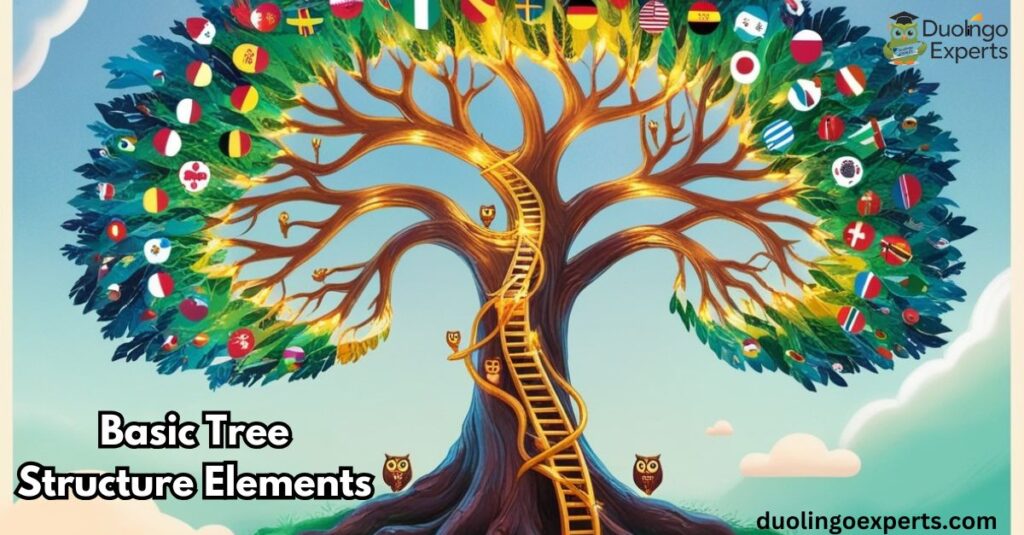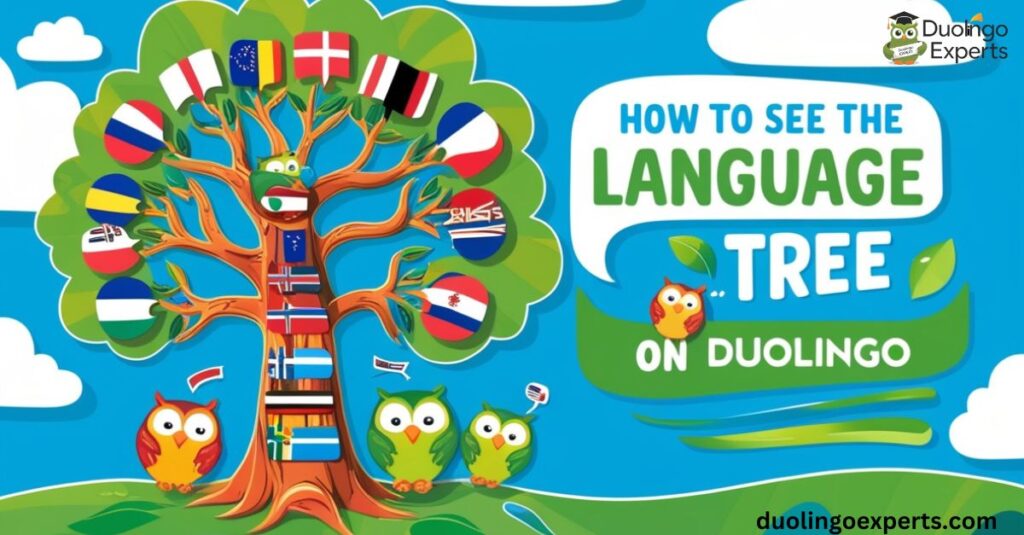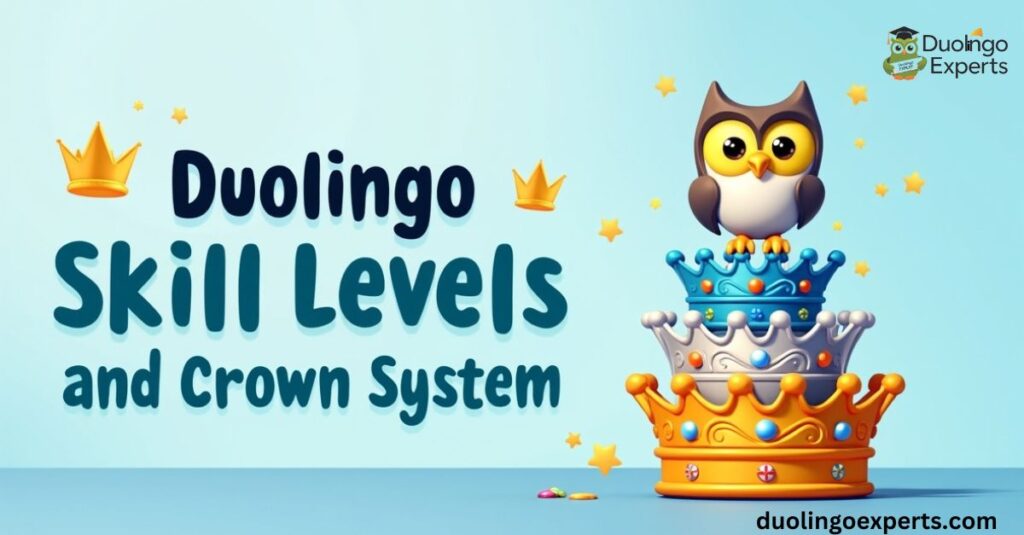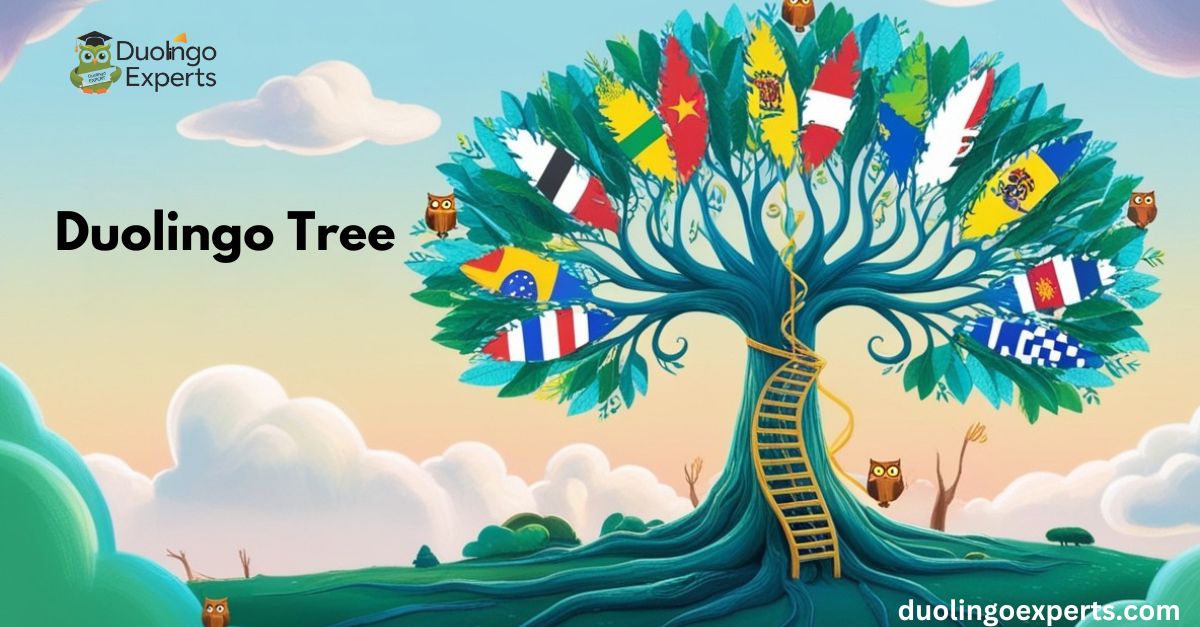Duolingo has taken the world by storm, offering millions of learners a free and accessible way to learn a new language. One of its most prominent features is the Duolingo language tree, which served as the core structure for learning.
However, with recent updates, Duolingo has shifted to the path system, leaving many users wondering how they can still access the old tree format. This guide will dive deep into both the Duolingo language tree and the Duolingo path system, explaining their differences, benefits, and how to navigate through them.
We’ll also explore crucial elements like the skill progression system, the Crown System, and progress synchronization. Whether you’re new to Duolingo or a seasoned user who misses the old design, this guide has everything you need to know.
What is the Duolingo Language Tree?
The Duolingo language tree was the heart of Duolingo’s course structure for years. It functioned as a visual representation of the entire language course, laid out like a branching tree. This structure allowed learners to see all available lessons and skills grouped by theme and difficulty.
The Basics of the Language Tree
- Skills: Each branch of the tree represented a skill in the language. These skills could cover basic topics like greetings or numbers and progress to more complex lessons such as verb conjugations or sentence structure.
- Levels: Within each skill, there were multiple levels to complete. Each level included multiple exercises, with successful completion unlocking the next level.
- Progression: As you moved through the tree, your skills were strengthened, and you gradually unlocked more advanced lessons, which provided a sense of accomplishment.
Despite the visual appeal and the clear structure, the Duolingo language tree had limitations in terms of user experience. The hierarchical layout was often overwhelming, and many learners found themselves lost among the numerous branches.
Course Skills Organization in Duolingo
Both the old Duolingo language tree and the new Duolingo path system are designed with a skill-based progression model. However, the way these skills are organized and presented has undergone some significant changes.
The Old Skill-Based System
In the original language tree, skills were organized into categories that aligned with different aspects of language learning. For example, you might have seen categories like:
- Verbs
- Adjectives
- Food and Drinks
- Family and Relationships
Within each category, there were individual skills. As you advanced, you completed more skills, each unlocking more complex topics, such as sentence construction or vocabulary related to different settings (like the workplace or travel). These skills were locked behind each level in the tree, creating a sense of progression.
The New Skill Organization in the Path System
With the introduction of the Duolingo path system, the way skills are presented has shifted significantly. The new system is more goal-oriented, offering a linear progression through lessons rather than a branching structure. Here’s how the new system works:
- Linear Progression: Instead of jumping from one skill to another based on your interests, the new path system guides you through a series of lessons in a specific order.
- Milestone-based Learning: Each major milestone (represented by a guidebook) takes you through multiple smaller lessons that focus on specific vocabulary or grammar.
- Goal-Oriented: The new system is more about achieving specific milestones, such as “Basic Phrases” or “Advanced Grammar,” rather than completing individual skills.
While this new layout may feel restrictive at first, it’s actually designed to provide a clearer, more structured path that minimizes distractions and confusion.
Basic Tree Structure Elements

Nodes: Skills
In the old Duolingo language tree, each skill was represented as a node on the tree. These nodes were typically icons that visually represented the subject of the lesson. For example, a skill related to numbers might feature a number icon, while one about food would feature a dish or utensil icon.
Branches: Categories
Each branch in the tree contained several skills related to a particular topic. These branches were organized in a hierarchical fashion. For instance, the Basics branch would contain fundamental skills like greetings, colors, or introductions, while the Verbs branch would contain lessons on verb conjugation, tenses, and other related topics.
Skill Levels
Each skill was divided into multiple levels. These levels indicated your mastery of the subject matter. As you completed a level, the skill would become more challenging, requiring you to complete more complex exercises. The goal was to gradually deepen your understanding of each language skill.
Skill Progression System
The Skill Progression System in Duolingo is designed to ensure that you build on your knowledge systematically. Whether you’re using the language tree or the path system, Duolingo follows a consistent model of progression, reinforcing previously learned material while introducing new topics.
The Crown System
One of the major components of the Skill Progression System is the Crown System. This system is designed to track your mastery of each skill. Each skill contains several levels, and as you successfully complete each one, you unlock a new crown. The more crowns you collect, the more advanced your knowledge of the language becomes.
Crown Levels
- Crown 1: You’ve learned the basics of the skill.
- Crown 2–3: You’re progressing, mastering intermediate concepts.
- Crown 4–5: You’ve gained a high level of mastery over the topic.
Each crown represents your ability to tackle more challenging exercises within that skill.
Skill Strength Decay
Duolingo also uses a Skill Strength Decay feature. This means that as you complete lessons and progress, the skills you’ve already learned begin to fade over time unless you actively review them.
Duolingo encourages this Review and Repetition process, ensuring that you retain your knowledge and don’t forget what you’ve learned. By revisiting skills and reinforcing them, you prevent skill decay.
How to See the Language Tree on Duolingo

The introduction of the Duolingo path system has led to the gradual removal of the language tree from the platform. However, for those who prefer the old structure, there are ways to access it. Here’s a step-by-step guide to seeing the Duolingo language tree:
On the Duolingo Web Portal
- Log in to Duolingo: Open your browser and visit the Duolingo website. Log in to your account using your credentials.
- Access the Tree: From your dashboard, you should see the option to view the language tree. Click it to access the old course layout.
- Start Learning: You can now navigate through the tree, completing each skill as you progress.
On the Duolingo Mobile App
On some devices, you can still access the old Duolingo tree by following these steps:
- Open the App: Launch the Duolingo mobile app on your device.
- Navigate to the Course: Select the language course you want to study.
- Switch Views: You should see an option to toggle between the new path system and the old language tree. Select the tree view to return to the classic design.
Duolingo Tree vs Path System: Key Differences
As mentioned earlier, the Duolingo tree and the Duolingo path system are quite different in structure. Here’s a quick breakdown of their primary differences:
| Feature | Duolingo Language Tree | Duolingo Path System |
|---|---|---|
| Structure | Hierarchical (branching) | Linear (step-by-step progression) |
| Navigation | Clear visualization of all available skills | Streamlined and focused on goals |
| Progression | Based on completing individual skills | Focused on completing milestones |
| Mastery Levels | Crowns indicate mastery of individual skills | Achieving goals unlocks new content |
| Review Mechanism | Skill Strength Decay (skill reviews) | Review integrated into the path |
Old Tree Design Features
The Duolingo language tree had several features that made it appealing to learners. Here are some of the most notable aspects:
- Visual Clarity: The tree design provided a clear, visual overview of your progress.
- Skill-based Levels: Each skill had its own set of levels, allowing for gradual mastery.
- Iconography: The skills were visually represented by simple icons, which made navigating the tree easy.
New Path Layout Benefits
While the Duolingo path system may take some getting used to, it does have several distinct advantages:
- Goal-Oriented Learning: With clear milestones, learners can see their progress in a more structured way.
- Increased Engagement: The integration of Duolingo Stories and bonus skills makes learning more interactive and fun.
- Clearer Focus: The new system minimizes distractions, helping you stay on track with your learning objectives.
Major Interface Changes
With the path system came several significant changes to Duolingo’s interface:
- Clean, Modern Design: The platform’s interface has been simplified, making it easier to navigate.
- New Icons and Indicators: The new path system uses different icons to represent goals, progress, and milestones.
- Stories Integration: Duolingo Stories are now embedded in the learning path, allowing for more contextualized learning.
Skill Levels and Crown System

As mentioned earlier, the Crown System is one of the most important features of Duolingo’s progression model. By earning crowns, you demonstrate your growing mastery over various language skills. The more crowns you collect, the more advanced your understanding of the language becomes.
Bonus Skills and Special Features
In addition to the main language lessons, Duolingo offers bonus skills to enhance your learning experience. These might include specialized lessons on things like idioms, slang, or cultural aspects of the language. Completing these bonus skills can deepen your knowledge of the language in fun and meaningful ways.
Unlockable Content and Premium Features
If you’re looking for an even more in-depth learning experience, you might consider subscribing to Super Duolingo or Duolingo Max. These premium subscriptions offer various benefits, such as:
- Offline Access: Download lessons for offline use.
- Ad-Free Learning: Enjoy an uninterrupted experience.
- Advanced Features: Unlock special features like Legendary Status.
Language Tree Updates and Changes
Duolingo constantly updates its courses to improve user experience. These updates could include:
- New Lessons: Duolingo often adds new lessons or modifies existing ones for greater clarity.
- Revised Layout: The structure of the language tree or path system may change to improve learning flow.
- Content Revisions: To keep content relevant, Duolingo frequently revises lessons to reflect the latest language trends.
Progress Tracking Across Platforms
Duolingo offers a seamless progress synchronization feature, ensuring that your learning is consistently tracked across different devices. Whether you’re learning on the mobile app or the web portal, your progress is automatically synced, meaning you can pick up right where you left off.
Frequently Asked Questions About Duolingo Tree
What is the tree in Duolingo?
The Duolingo tree is a visual representation of the language course, organizing skills into branches and levels. It shows your progress and helps you navigate through various language topics in a structured way.
How long does it take to finish a Duolingo tree?
The time to finish a Duolingo tree depends on your learning pace and consistency, but it typically takes a few months to complete. On average, learners might spend around 30–60 minutes per day to finish the tree.
Why is Duolingo’s face melting?
The face melting on Duolingo refers to a humorous visual glitch or a memetic phenomenon where the app’s mascot, Duo the owl, appears distorted or “melting” due to system errors. It became an internet meme among users.
What level of Duolingo is considered fluent?
Duolingo doesn’t officially define a “fluent” level, but reaching Crown Level 5 in each skill indicates a high mastery of the language. Fluency is more about consistent practice and real-world usage, rather than a specific Duolingo level.
What’s new in Duolingo in 2025?
In 2025, Duolingo continues to enhance its Path System, integrating more interactive features like AI-powered tutoring and improved speech recognition. Additionally, new bonus skills and personalized learning paths make the experience even more tailored to individual needs.
Is Babbel better than Duolingo?
Babbel offers more structured, grammar-focused lessons, while Duolingo is gamified and better for casual learning. The choice depends on whether you prefer a more comprehensive, traditional approach (Babbel) or a fun, flexible learning experience (Duolingo).
Why does Duolingo have a bird?
The bird in Duolingo, Duo the owl, serves as the platform’s mascot, symbolizing learning and engagement. Its cute and approachable design encourages users to stay motivated and entertained throughout their language journey.
What is the difference between tree and path in Duolingo?
The tree in Duolingo is a hierarchical structure of skills and lessons, while the path is a more linear, goal-oriented progression system. The path offers a streamlined learning experience, focusing on milestones instead of branching topics.
What kind of animal is that Duolingo?
The Duolingo mascot is an owl, named Duo, representing wisdom and learning. Its friendly and approachable design makes language learning more engaging and fun for users.
Can you finish Duolingo?
While you can complete all the lessons in Duolingo, true fluency is a continuous journey. Duolingo encourages ongoing practice through reviews and new content, ensuring lifelong learning.
Conclusion
The Duolingo language tree and the newer Duolingo path system offer different approaches to language learning, each with its own benefits. The path system introduces a more structured, goal-oriented experience, while the tree remains a beloved classic for many learners.
Whether you’re new to Duolingo or a veteran user, understanding the ins and outs of these systems, their features, and how to navigate them will help you get the most out of your language learning journey.

DuolingoExperts, managed by MarkJohan, offers expert insights and tips for mastering languages. A tech-driven platform to enhance your learning experience.

